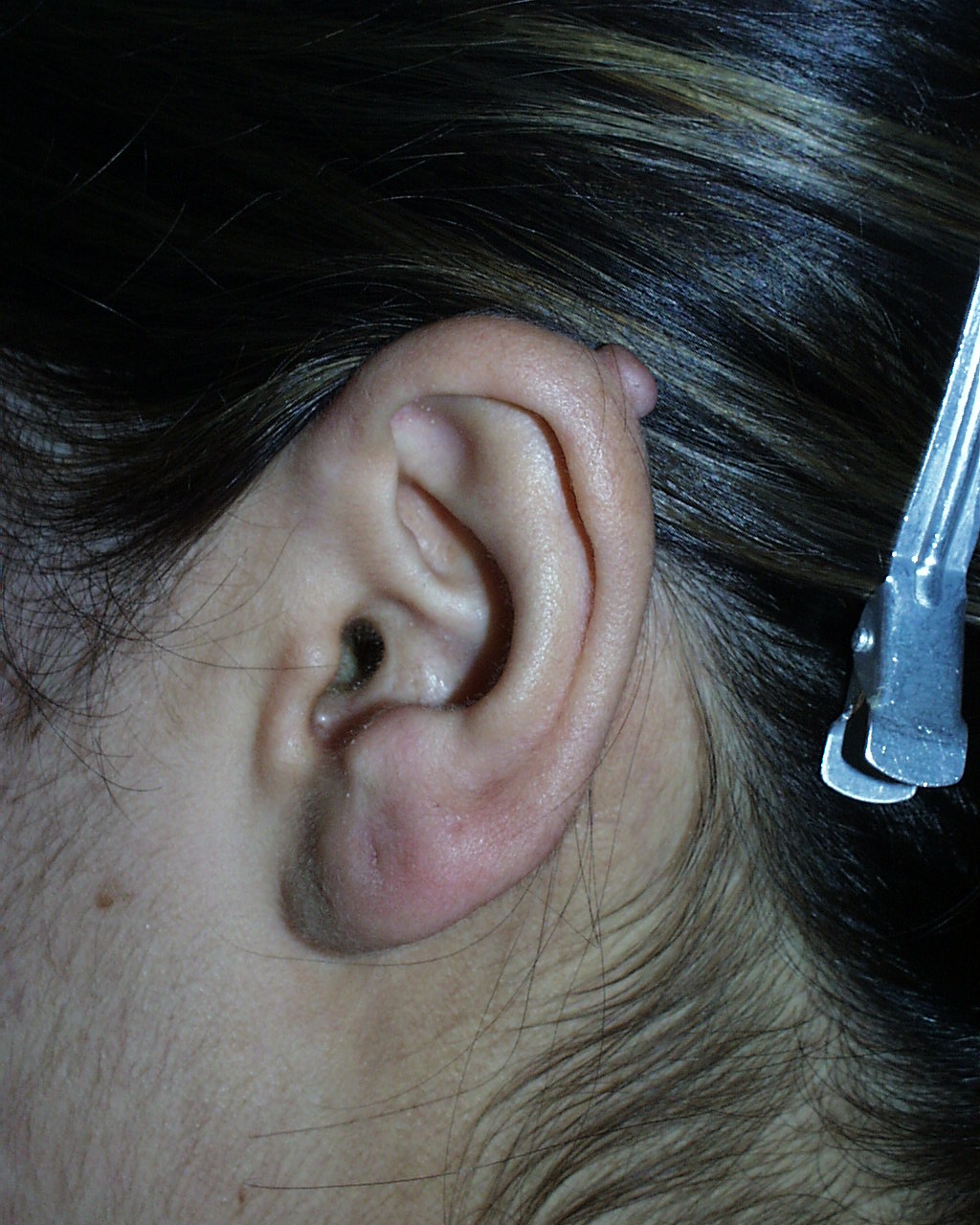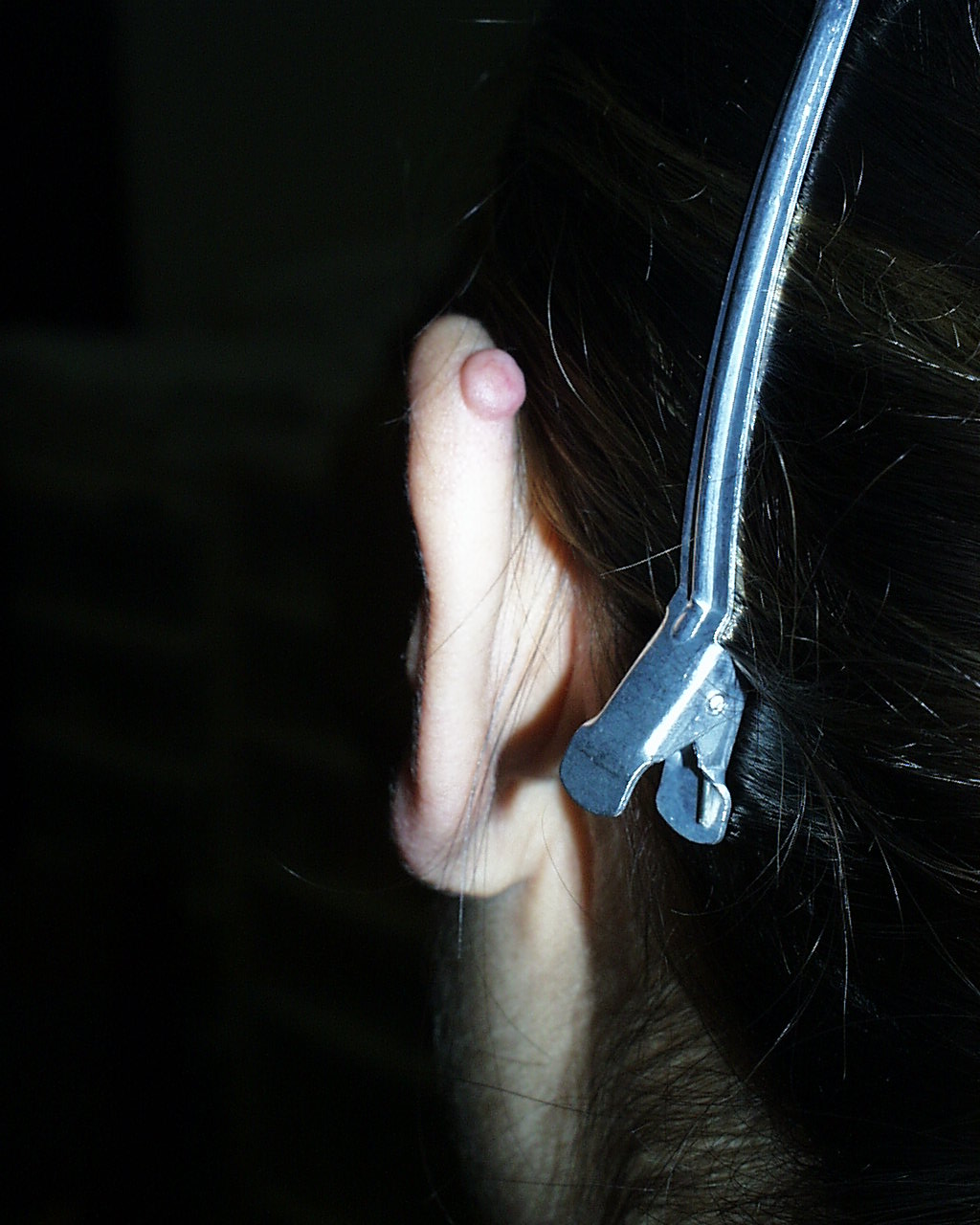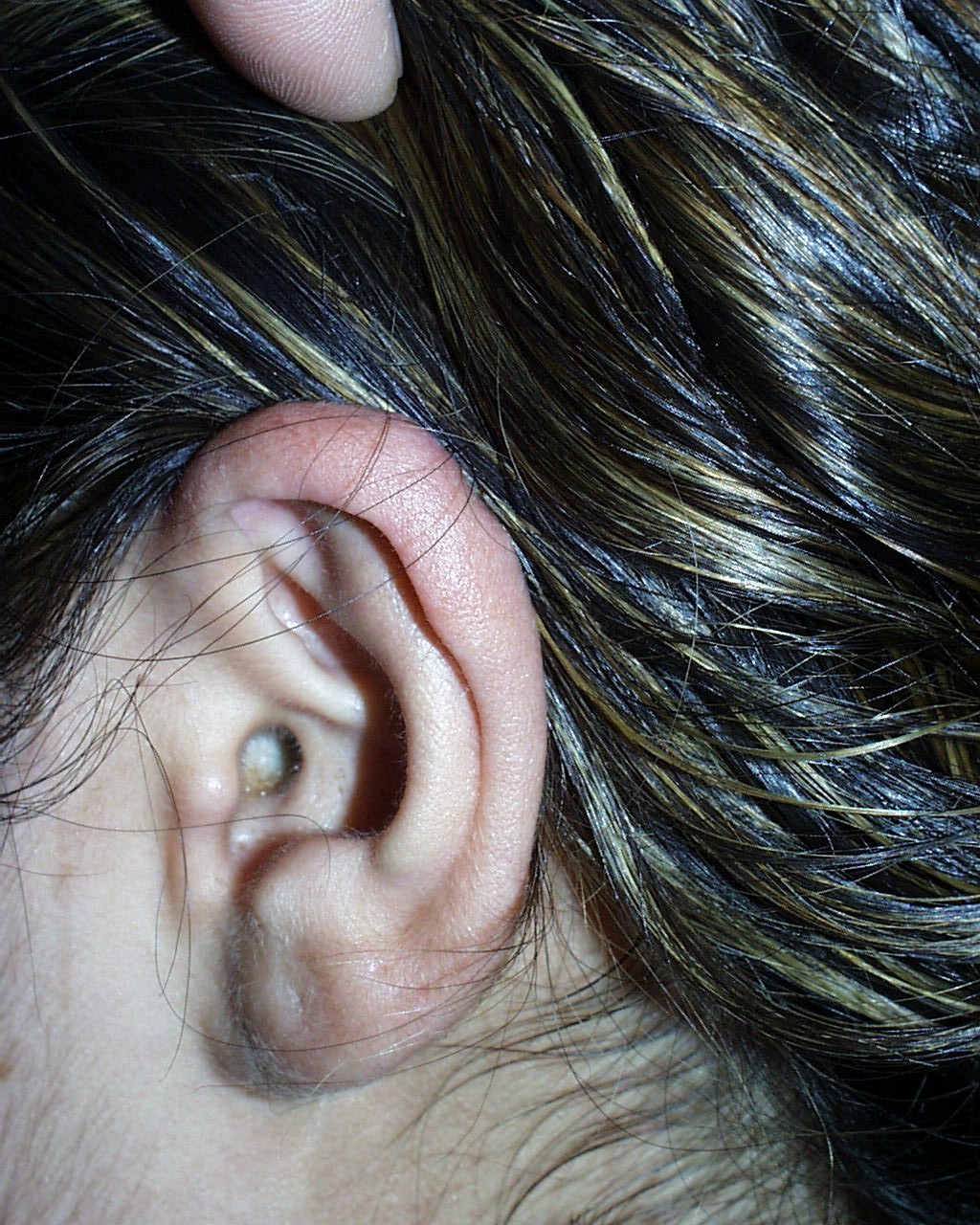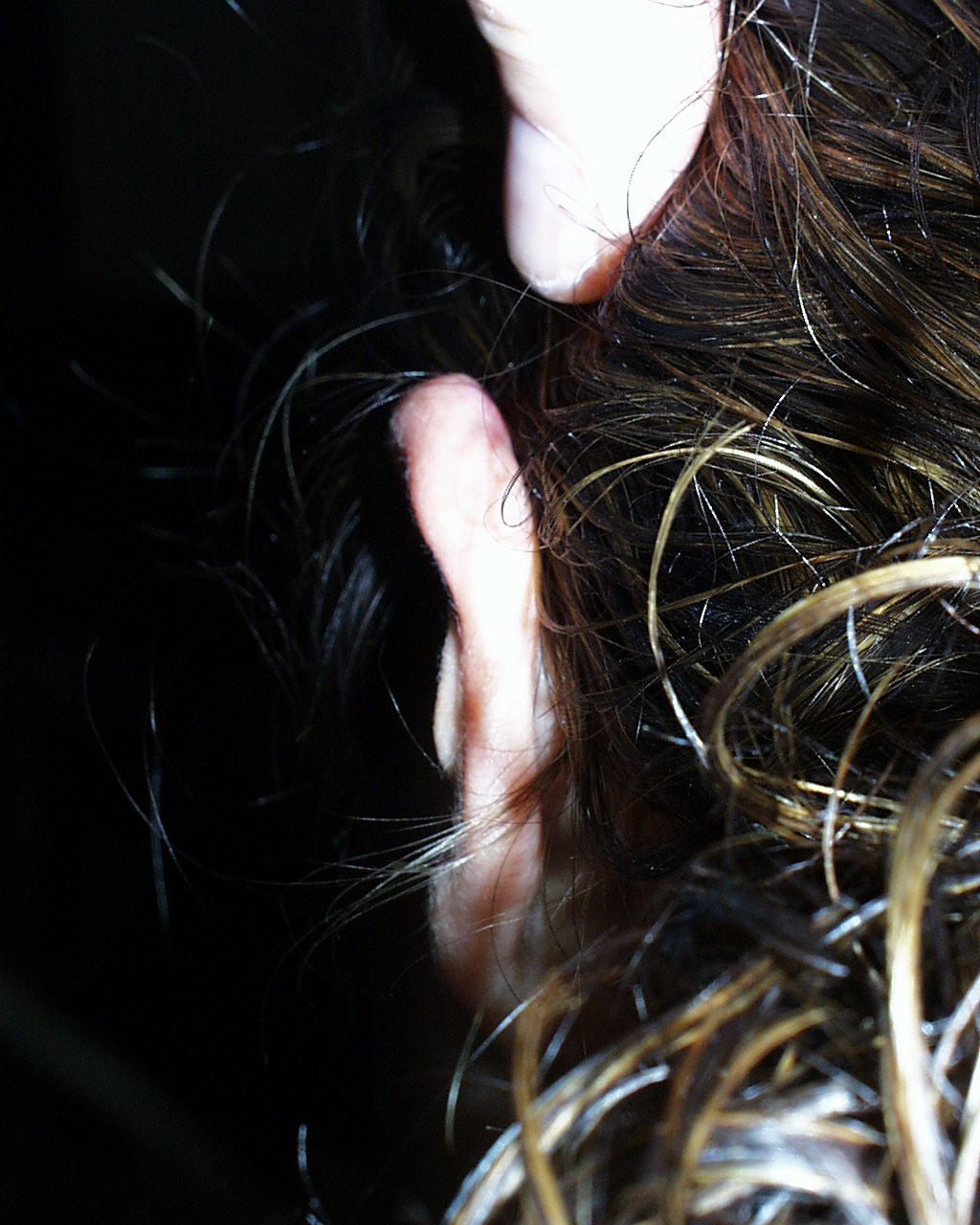Before I get into the details of how to evaluate a scar, I would like to provide a quick example of scar revision. Scars that present for revision come in two categories: Keloids and Hypertrophic scars.
Keloids Scars are scars that grow larger than the area of injury. They tend to be raised, and are often itchy. They frequently continue to grow with time, and are different, on a cellular level, than hypertrophic scars.
Hypertrophic Scars are wide or raised scars that maintain the pattern of the original injury. They may be wide-spread, and can range in color from white to red or purple. Often after a year they stop changing.
The scar in the picture is from a single clean piercing of the upper ear. In response to a small injury, a relatively large raised itchy red/purple scar has formed. This scar is larger than the original piercing, so it is clinically consistent with a Keloid.
 Keloid scar at 1 o'clock on the helix of the ear. |
 Keloid of the ear - view from behind. |
This keloid scar was treated with depo steroid injections, combined with direct excision and repair. This may sound simple, but realize, that resecting this keloid causes an injury which is hundreds of times larger than the small needle stick that started the keloid. In this case, an excellent result was achieved, but this is not always the case.
 Side view of ear after resection of keloid. |
 Keloid scar revision - no recurrence. |
The keloid was removed, the base remains smooth and flat with no itching, and most importantly, there has been no recurrence. Keloids are among the most challenging scars to revise, due to their high rate of recurrence.
Next time, the details on how to evaluate a scar, so that the correct treatment can be initiated.
Previous Post Next Post